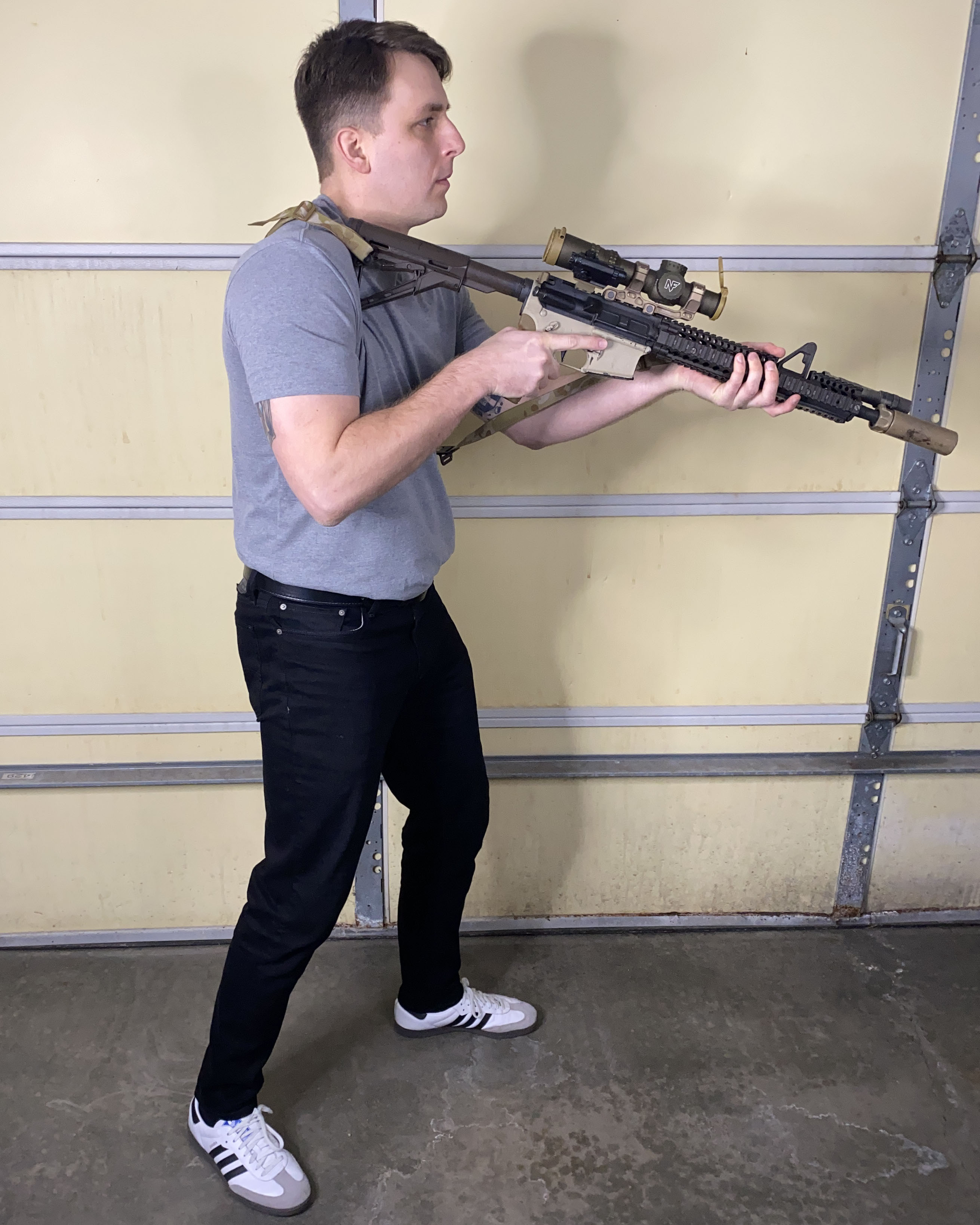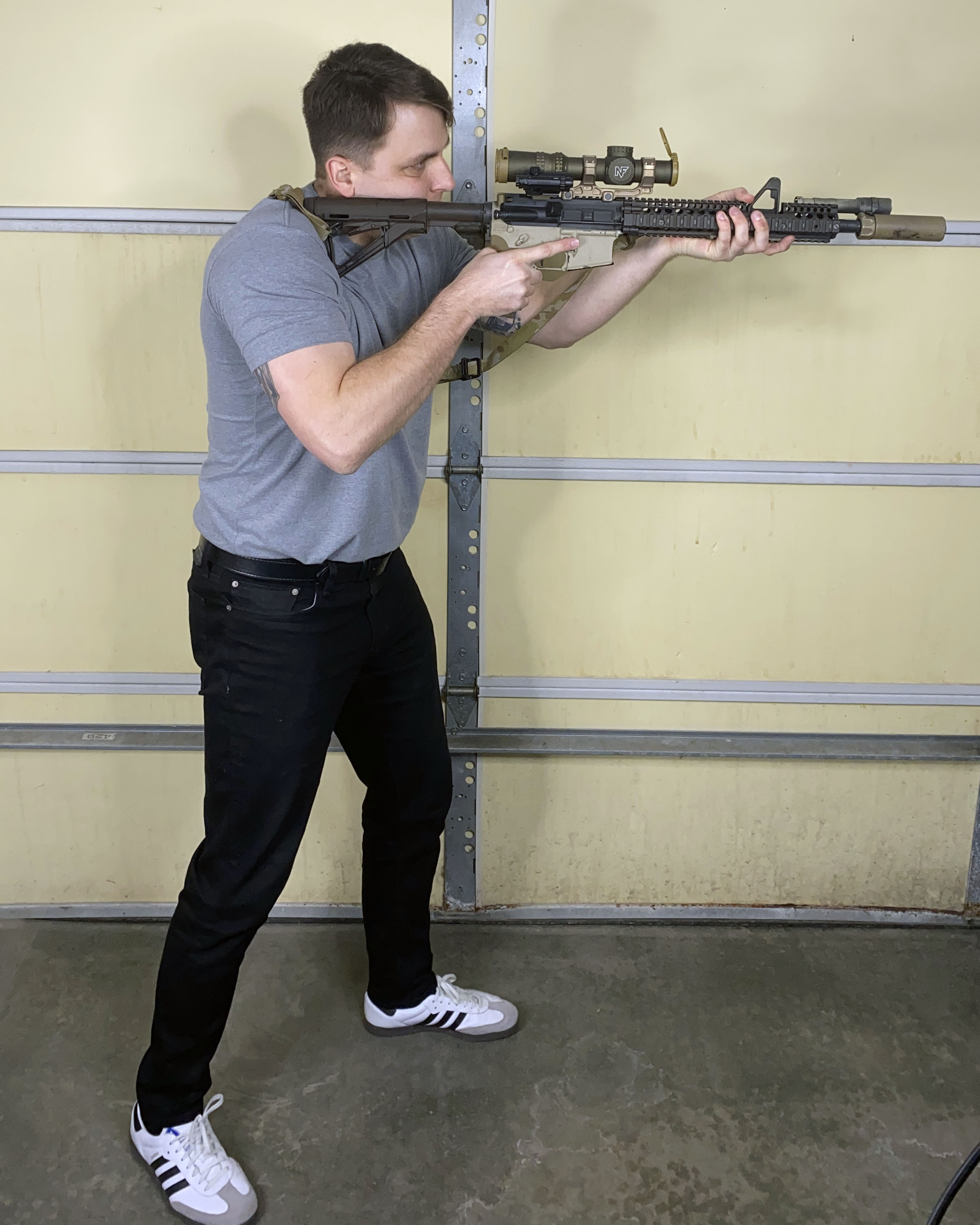DO YOU WANT TO GET KINETIC?
hAVE YOU EVER DREAMED OF BEING A PROJECTILE?
DO YOU WISH TO ACHIEVE KNIGHTHOOD?
YUO MUST ENGAGE IN PRACTICAL COMPETITIVE SHOOTING.
Training Mentality
When learning a new skill, it is important to be process focused rather then outcome focused because these fundamental skills are meant to build you up to more advanced techniques; ingoring the techniques in here because "I already know how to shoot good groups," will make it harder to learn more advanced skills.Terms Defined
Here are some important key terms to keep in mind when learning.- Trigger hand: Your dominant hand that you will be using to work the trigger of your weapon with.
- Support hand: your non-dominant hand that you will be supporting your weapons with.
Connection to your rifle
Your connection is what you use to immediately control the rifle with the goal to place rapid accurate shots. Recoil can never be eliminated because you're having an explosion go off in your hands, but you can manage it with proper connection. In order to do this follow these steps:- trigger hand grip: The trigger hand should be placed as high as you can go on the grip of your rifle, this is to assit in controlling the rifle. Keep your grip firm but relaxed, because the trigger hand's primary job is to pull the trigger and to accomplish this it needs to relaxed enough that it doesn't interfere with pulling the trigger.
- Support arm placement: The support arm should be gripping the handguard where you will have the ability to drive the gun into your shoulder and is comfortable. For me this translates to gripping the handguard right behind the front sight post. I have seen a lot of variation and discussion on where to place the support hand and my personal advise to to keep your elbows below the gun. When you're shooting on the clock at a match you dont want to focus on a hyper specific spot that you think they must be at, because its counter-productive and you'll just end up constantly adjusting your arm position during a course of fire and it'll just make your accuracy worse.
- Support arm drive: The support arm's primary role is to control the recoil of the rifle and should be driving the rifle into your shoulder.
- Shoulder tension: keep your shoulders relaxed, this can be tricky to do while also driving the rifle into your shoulder.

Stance
- Knees unlocked: Because you must be ready to move.
- Slight lean forward: You are ready to control the gun and not have the gun control you by pushing you around with the recoil.
- Shoulders relaxed: You do not want to tense up and creating a situationg where you are fighting yourself and exhaust energy with unecessary body tension.
- Foot positions: For rifles i recommend putting the foot on your trigger hand side back to assist with controlling the rifle's recoil. Higher recoil rifles, like the ar10, will put this fundamental to the test.
The stance and connection to your rifle should look similar to this. Note that this is not in the low ready position, but up and ready to fire.
